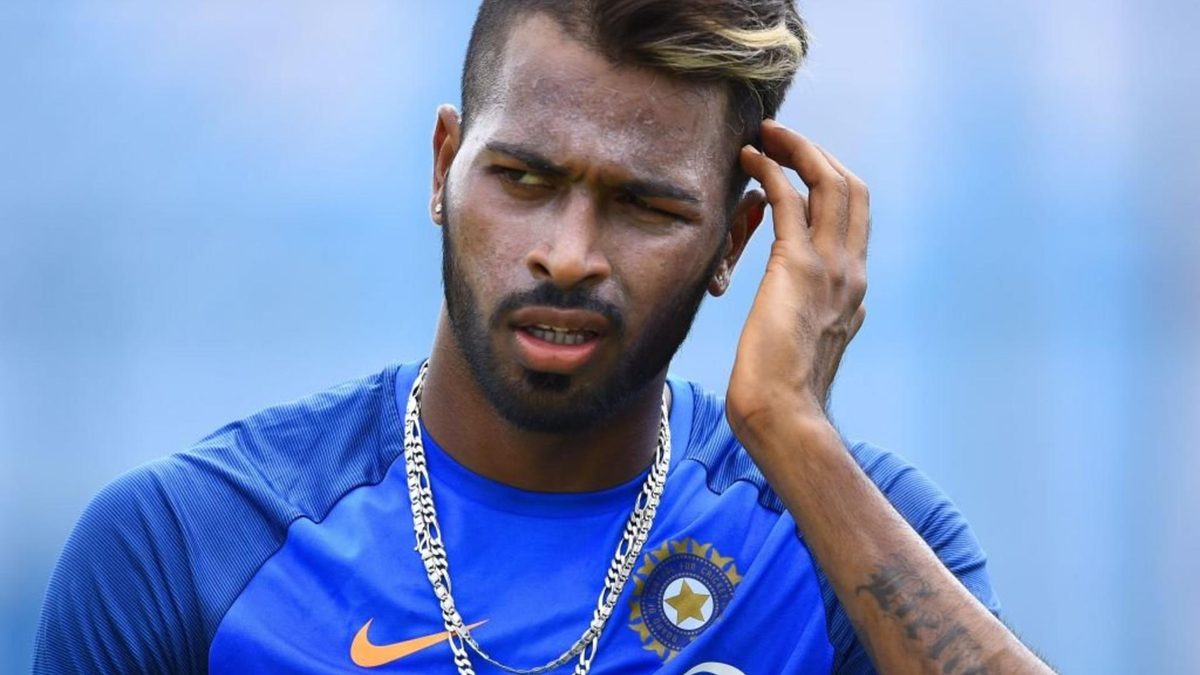
Instead of comparing him to players of the past, India should let Hardik Pandya be Hardik Pandya – and here’s why he’s worth sticking with.
When any young player takes his first steps into Test match cricket, the natural instinct is to formulate comparisons with the heroes of yesteryear. Until they carve out their own identity, the desire to find an old sense of familiarity remains – we cling to the hope that the arrival of new blood does not mean that the old order has fallen.
Take Ollie Pope. He has played three innings for England and ‘amassed’ scores of 28, 10, and 16. And yet, the clamour to label him as some sort of Root-Bell hybrid, a flashing stroke-maker in England’s middle-order, has only intensified. History indicates that he won’t be allowed to stand as his own man just yet, not until he makes his mark or falls by the wayside.
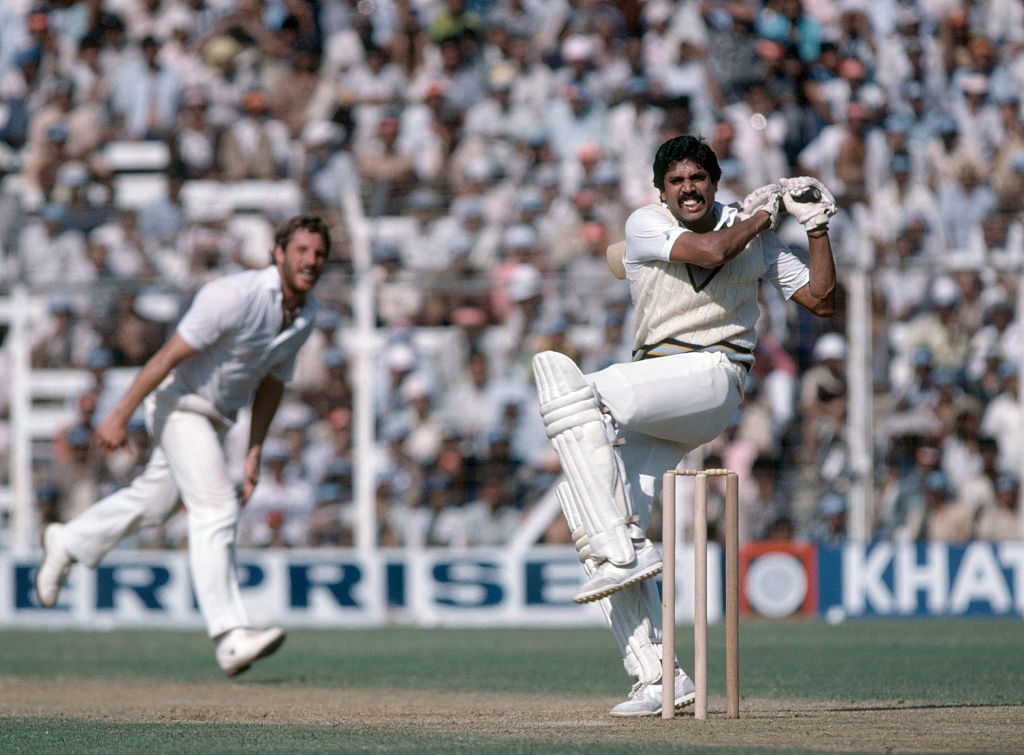 The old Hardik Pandya?
The old Hardik Pandya?
Hardik Pandya is an Indian fast bowling all-rounder, something India haven’t properly had since the retirement of Kapil Dev 30 years ago. Some of his performances against England and South Africa earlier this year might suggest the endless search for the new Kapil seems to be coming to a close. And yet, to label Pandya as a descendant of another is to do a disservice to an incredibly fascinating figure – one that embodies modern India.
Even at a relatively early stage in his career, Pandya has displayed a penchant for the improbable. His first major contribution in international cricket came against Bangladesh in the 2016 World T20. The Tigers needed 11 off the last over, which after a pair of boundaries became two from three. A team hat-trick later, and India had secured victory by one run. Perhaps it was more a case of implosion from Mushfiqur Rahim and Mahmudullah than death-bowling excellence from Pandya, but it still set the tone for a player around who the big moments would revolve.
Fast-forward a year and Pandya is striding out to the crease in the final of the Champions Trophy. His side are 54-5, and nowhere near Pakistan’s total of 338. What should be an abject surrender turns into a stunning rearguard. Unperturbed by the prospect of his side being crushed by their fiercest rivals in front of a full-house in a major final, Pandya isn’t interested in saving face – the only thing on his mind is winning.
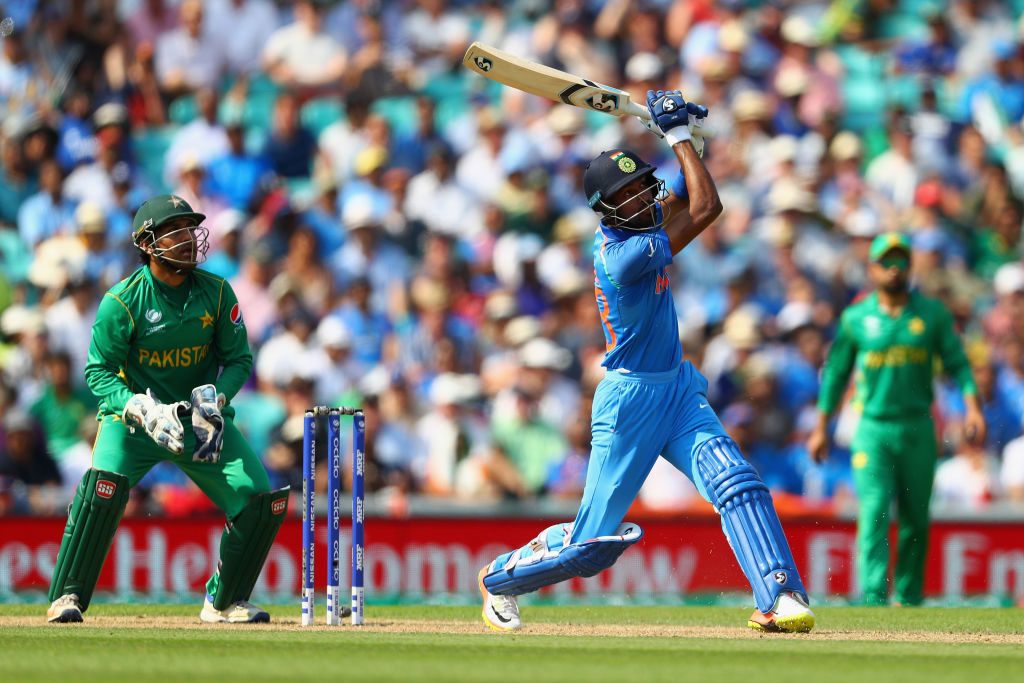 Pandya takes down Shadab
Pandya takes down Shadab
By this stage, leg-spinning tyro Shadab Khan has already picked up the wickets of Yuvraj Singh and Kehar Jadhav. To Pandya, he’s no more than a net bowler employed for range hitting practice, as he launches him back down the ground with more swagger than any number of earrings and tattoos. For a fleeting moment, a previously jubilant Pakistan fanbase are fearful.
Only a comical mix-up with Ravindra Jadeja sees Pandya depart to a run-out. Amidst a burning building, his gun-slinging 76 from just 43 deliveries does more than salvage respectability; for a second, it gives India genuine hope.
Brash, brutal and undying belief. Welcome to the cult of Hardik Pandya.
***
Some remain uninitiated. Prior to the Trent Bridge Test, West Indian legend Michael Holding was critical of Pandya’s role in Virat Kohli’s side.
“There must be someone that can bat better if they want a batsman, there must be someone who can bowl better if they want a bowler,” Holding told ESPNcricinfo. “But it seems as if they’re trying to fit two spots with one person. He’s not there yet.”
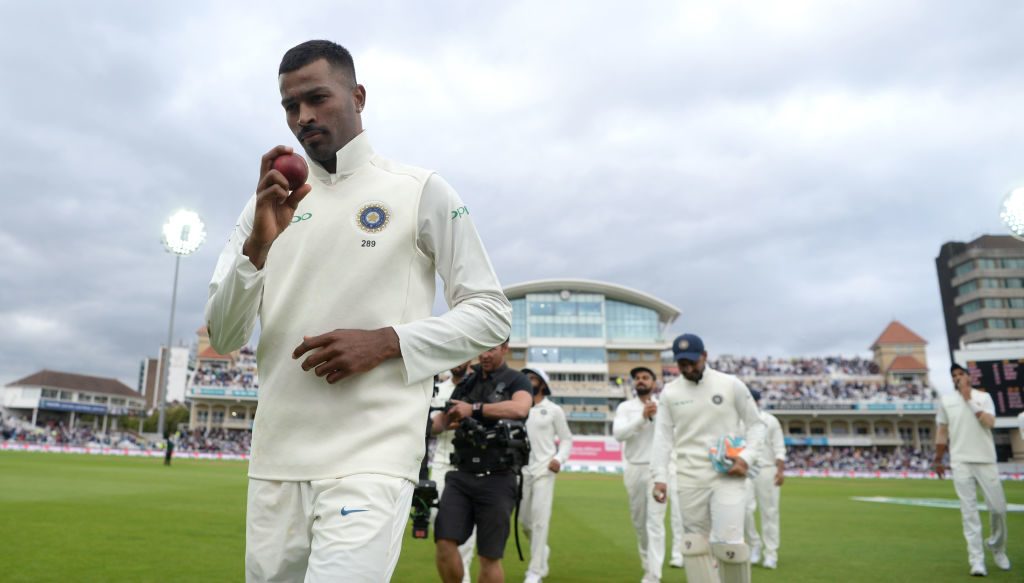 Pandya walks off after claiming five-for at Trent Bridge
Pandya walks off after claiming five-for at Trent Bridge
It wasn’t exactly disparaging criticism. But one can only imagine that as Pandya took to the field on the second day of the third Test at Trent Bridge, the words were ringing in his ears.
There is some truth in Holding’s words. For a player with an all-or-nothing reputation, Pandya hasn’t been ‘all’ all that much. When it clicks, as it did at Trent Bridge, it really clicks. Pitching the ball up with just enough swing, the simplicity of his method proved devastating. He walked off the field raising the ball, a fully deserved five-wicket haul to his name. But it was his first five-for across formats for India. By the end of the series Pandya was out of the side, having endured a miserable time in Southampton, a solitary wicket to go with his four runs in the match.
At The Oval he carried out twelfth man duties. As Alastair Cook enjoyed a finish so romantic that it prompted Ian Botham to query whether he’d stolen his script-writer, Pandya watched on from the square-leg boundary, consigned to watching Cook and Joe Root make merry in the early September sunshine. A man seemingly dedicated towards being the leading character of the story, forced into a supporting role.
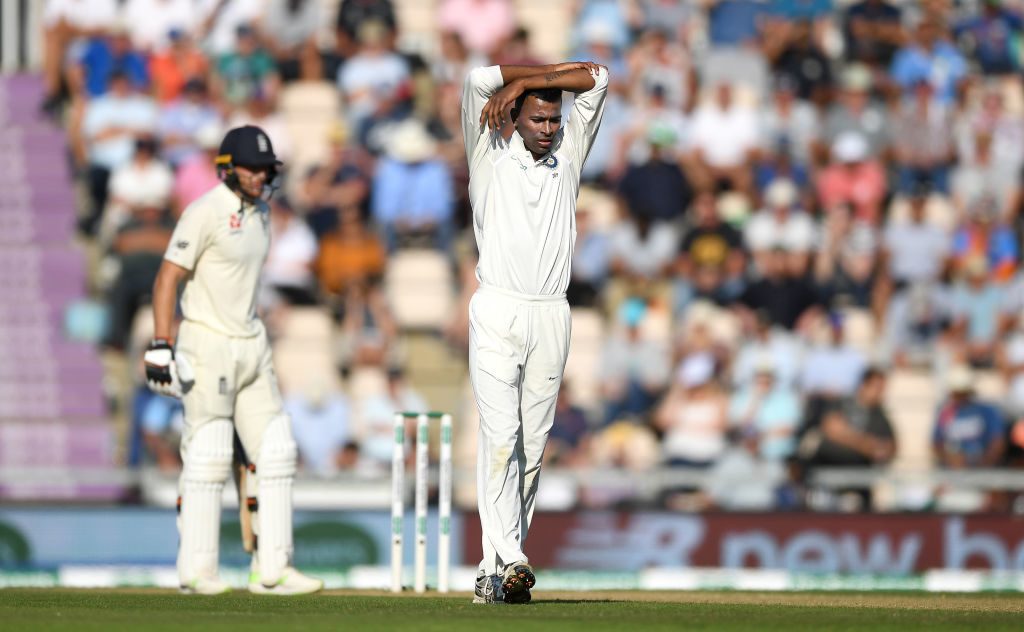 Pandya endured a tough Test at the Rose Bowl
Pandya endured a tough Test at the Rose Bowl
The image Pandya cultivates of himself is of the mercurial, self-confident wunderkind. Cricketing stardom in India is a phenomenon that extends far beyond the sport itself, into a range of advertisements and endorsements, even encroaching into the realms of Bollywood and music. Pandya’s rockstar image, with hair undergoing constant experimentation, is a perfect fit for this world, for billboards and magazine covers – he has already featured on the cover of Sports Illustrated. He is one for soaking the limelight rather than brushing it away.
That fame comes hand-in-hand with public scrutiny. Many Indian fans on social media have begun to write their own obituaries of Pandya’s Test career in recent days, taking pleasure in his axing. The man who was the next Kapil last month is now simply a pale imitation of the great all-rounder. Such talk is cheap. We know what he’s capable of. We see how he portrays himself. To do anything less than bend every game he plays to his will is a disappointment.
But to think of Pandya as a wrecking ball, only in the XI for his occasional match-winning performance, is to do him a disservice.
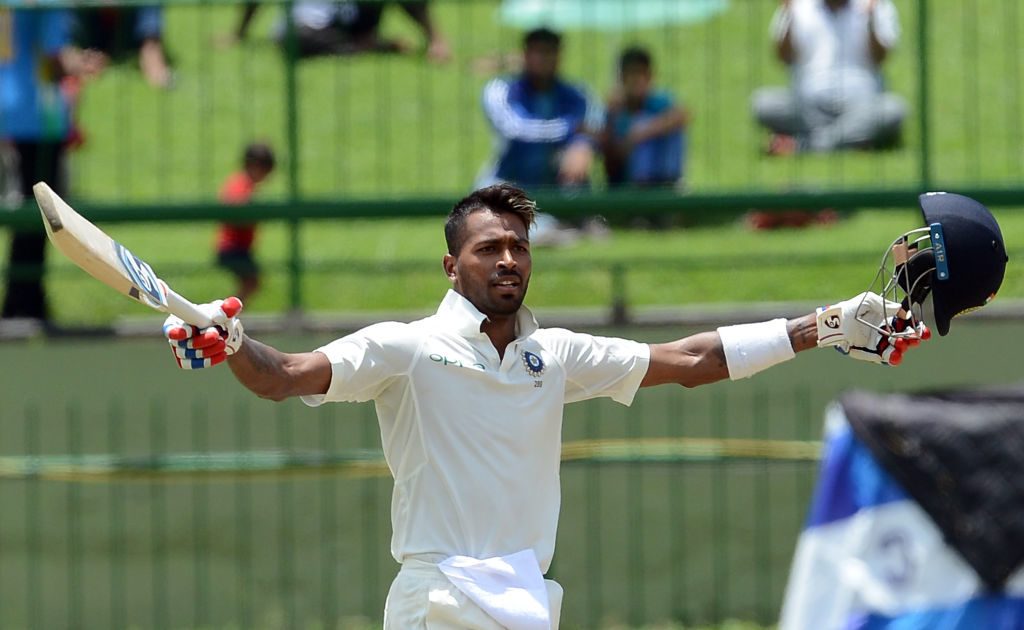 Pandya celebrates his maiden Test ton, his hair looking pristine
Pandya celebrates his maiden Test ton, his hair looking pristine
Prior to the fourth Test, Pandya was India’s second-highest Test run-scorer in 2018, surpassed only by Virat Kohli’s excellence. In a year in which virtually every Indian batsman bar Kohli has struggled in some of the harshest foreign conditions they have encountered, Pandya has stood taller than all but one, adjusting his technique and temperament accordingly.
In the first three Tests in England, before a 4 and 0 at Southampton which fuelled his dropping at the Oval, he was not dismissed for a single-figure score. In the first Test, he faced more than 50 balls in both innings, second to Kohli on both occasions.
As stunning his bowling performance at Trent Bridge was, he is as willing to be the workhorse as the show pony, hitting a hard length when the ball is soft and old. His vibrant attitude is a breath of fresh air, and Pandya will always be someone who might be able to turn a game by himself. But he’s also capable of much more, of contributing and making a difference even when he’s not in world-beating mood.
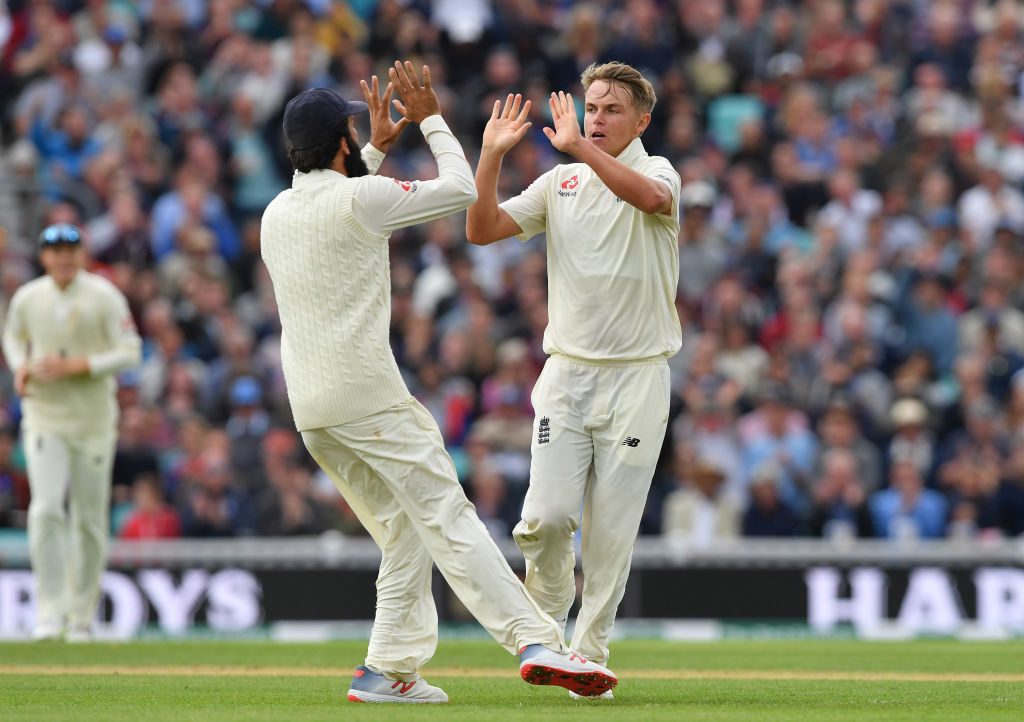 England’s all-rounders proved decisive; India should follow their lead
England’s all-rounders proved decisive; India should follow their lead
England’s series victory was built on the back of their all-round firepower, and with a mis-firing batting line-up and an injury-prone bowling attack, India should look to emulate them. Pandya will win games on his own, but he might also be the missing jigsaw piece in the puzzle that is India’s quest to become a stronger side overseas.
He’ll get another chance. Kohli’s India selection meetings may seem from the outside little more than a lucky dip, but it at least means no one is left in the cold for too long. When he does come back, let’s do him and ourselves a favour. Let’s put away the comparisons and let Hardik Pandya be Hardik Pandya.








